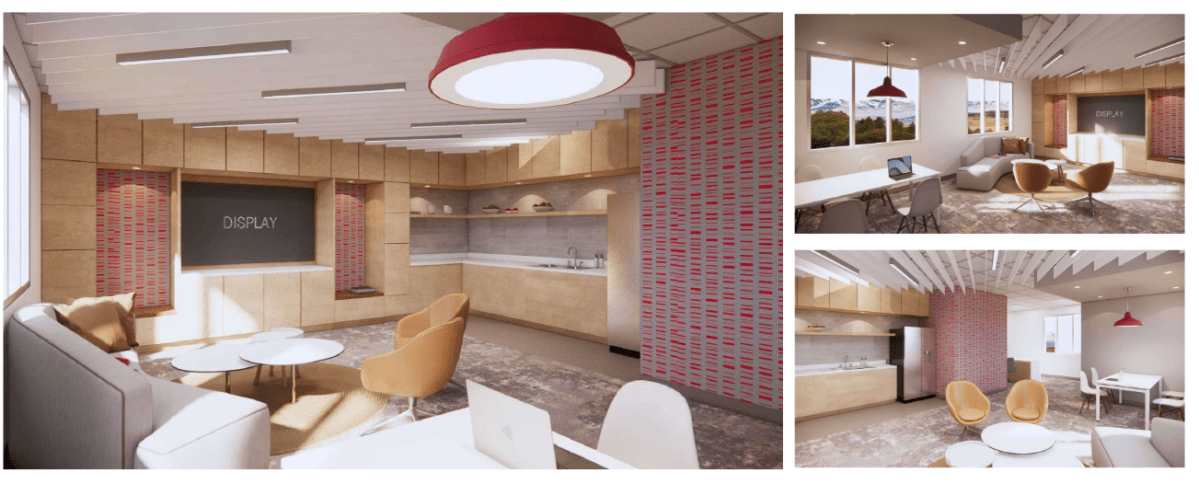As Park City High School’s shop classes move into the building’s extension planned to be completed in time for the 2024-25 school year, the old wood shop will become a teen center for students.
Scott Later, a project manager with MHTN architects, filled the board in on the selection of that location and talked about what the center will offer. He said one of their primary focuses is to provide support for housing-insecure or food-insecure students.
“You may not think that that occurs within a district like Park City,” he said. “You’d be very surprised.”
He said planners considered putting the center, including a place upstairs, within the main high school building or moving administration offices so it could be close to the school’s main entrance.
Ultimately, he said the benefits of the wood shop made it the ideal host for the future center.
“Part of the reason for consideration of that area in conjunction with the team is that the current wood shop is moving into the new addition,” Later said. “A lot of those components, a lot of those pieces, are moving into larger space with more accommodations, and so it vacates that area of the building.”
State funding was allocated for the teen center in 2022. In a previous meeting, Chief Student Services Officer Carolyn Synan told board members that Davis School District has 11 teen centers, and 53 other schools in Utah are looking to fund similar projects. She said the district received a Utah Board of Education grant for $250,000 and a Secured Policy Project grant for $30,000 for the project with the caveat that the funds be used to open a center by June 30, 2025.
Beyond the grant funds, the district will still see a $1 million price tag that Superintendent Jill Gildea said they will pay through “interest proceeds from the monies that are funding the high school.”
On Tuesday, Later began referring to it as a student center rather than a teen center.
“There’s a thought that part of this move is an absorption of the learning center into this space,” he said.
When students walk into the center, he said they will be greeted by a living room space with grab-and-go food and a zen area to recharge. The building will include two small classrooms that can accommodate up to 20 students, offices for social or support services, and an area to wash or do laundry.
It’s roughly 3,800 square feet, which Later said is about double the size of most teen centers in Utah.
“We’re finding a great need for places to shower and change and do your laundry,” he said.
Given the lack of a library in Park City High School or its new extension, Gildea said the center can also serve as a place for students to work on projects together.
With the June 2025 and its subsequent loss of grant funds looming, the board offered their approval even though members expressed concerns.
Board member Wendy Crossland worried that the district might not have appropriate funding to accommodate staff members who would need to be available at the center during after-school hours, board member Anne Peters thought the layout of the center could take away some of its effectiveness to help students who need resources, and board member Nicholas Hill worried that converting the building to a teen center would take away an important storage area for arts programs.
Park City High School Principal Roger Arbabi said school officials are looking into storage solutions for the fine arts programs.
Despite concerns, board President Andrew Caplan urged his peers to approve the center Tuesday rather than delay and risk lose grant funding.
“I would prefer to go forward with it,” he said. “We have a $300,000 discount. I think the window’s probably now because having this project go up by 30% to wait and get designs perfect … I don’t think it’s necessary given the potential impact it’ll have on kids who need it most.”
The approval vote was unanimous.

